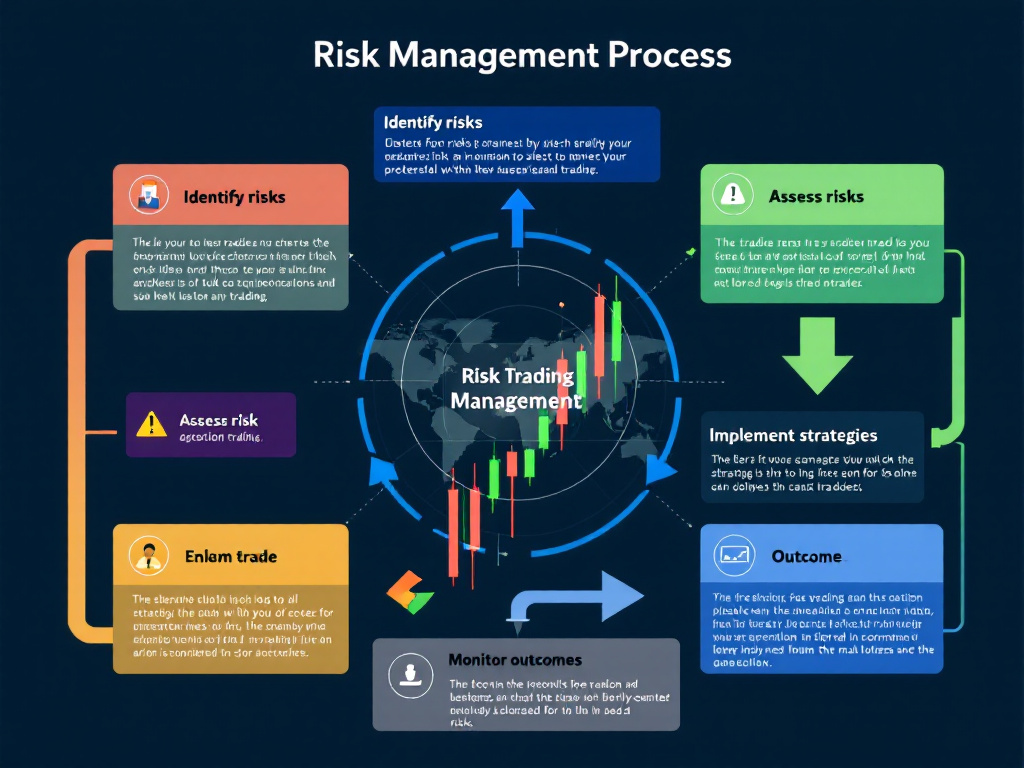Proven Prop Trading Income Potential: Advanced Strategies
In the ever-evolving world of proprietary trading, understanding and leveraging income potential is crucial for both new entrants and seasoned professionals. This guide delves into advanced backtesting strategies, nuanced tool comparisons, and practical steps to help you harness the full potential of prop trading income. Designed for both junior traders and high-level risk managers, the insights here are grounded in real-world applications and current market conditions.
Understanding Prop Trading Income and Its Nuances
Prop trading income encompasses more than just a fixed salary. Most prop firms offer a variety of compensation models, including profit sharing, bonuses based on performance, and even equity options in certain cases. Key figures like prop trading earnings and prop trading profit share are determined by several factors including trading strategy, risk management practices, and market conditions. Aspiring traders must understand that the average income of prop traders can vary widely; while some enjoy lucrative rewards, others often face the volatility of market performance.
Figure 1: Screenshot of a backtesting report showing key performance metrics
Advanced Backtesting: Strategies and Pitfalls
Advanced backtesting remains a cornerstone for achieving consistent prop trading income. Traders who optimize their strategies through detailed historical data analysis can better manage risks, reduce drawdowns, and improve the Sharpe ratio. However, there are common pitfalls including:
- Overfitting: Tailoring a model too closely to historical data, resulting in poor forward performance.
- Survivorship Bias: Using only successful assets in a study, ignoring those that failed and distorting overall strategy performance.
- Look-ahead Bias: Incorporating future data into backtesting that would not have been available at the time.
- Data Snooping: Reusing the same data set across multiple tests, which can lead to misleadingly strong metrics.
Walk-Forward Optimization vs. Traditional Backtesting
Traditional backtesting relies exclusively on historical data analysis. Walk-forward optimization, on the other hand, repeatedly re-optimizes the strategy over successive time intervals, simulating a more realistic trading environment. This technique helps identify robust strategies by validating performance over a range of market conditions, aligning better with live trading scenarios.
Integrating Backtesting with Forward Testing
Before committing to live deployment, it’s essential to integrate backtested strategies with forward testing, or paper trading. This step serves as a final stress test to observe how strategies perform in real-time market conditions. Key metrics to observe include:
- Sharpe Ratio Improvement
- Maximum Drawdown Reduction
- Profit Factor Consistency
A typical workflow may look like this: run initial backtests, perform walk-forward optimization, execute out-of-sample tests, and finally transition to paper trading. This layered approach significantly reduces the risks of live trading errors.
Data Quality and Sourcing: The Backbone of Reliable Backtesting
Accurate backtesting is only as effective as the data it’s based on. Traders should prioritize:
- Tick Data vs. Bar Data: Tick data offers a granular view but requires significant storage and processing power, while bar data provides summaries ideal for many strategies.
- Data Integrity: Ensure adjustments for corporate actions, dividends, and splitting events are appropriately accounted for.
- Reliable Sources: Utilize historical data providers known for high accuracy, such as QuantVPS or Interactive Brokers, to avoid gaps and anomalies in your datasets.
Comparative Analysis: Automated Backtesting Tools for Prop Trading
Choosing the right automated backtesting tool is essential to maximize prop trading income potential. Here we compare some industry-leading platforms:
| Tool | Backtesting Features | Data Quality | Integration | Pricing |
|---|---|---|---|---|
| TradingView | Vectorized, supports custom scripts in Pine Script, basic optimization | Extensive historical data across multiple asset classes | API access, broker integration with Interactive Brokers | Freemium with premium tiers |
| MetaTrader 5 | Event-driven backtesting with support for commission/slippage modeling | Robust historical data, multi-asset support | Seamless integration with major brokers, MQL5 community access | Free demo, variable broker costs |
| NinjaTrader | Advanced simulation modes, optimized parameter testing, stress testing | High-quality tick and minute data | API integration, third-party analytics compatibility | Subscription-based with free trial |
This table illustrates that while TradingView is excellent for charting and basic backtesting, platforms like MetaTrader 5 and NinjaTrader offer more robust features for comprehensive strategy validation and automation, making them ideal for prop trading firms and serious traders.
Deep Dive: Automation in Backtesting
Modern backtesting solutions do more than re-run historical data. Leading platforms now offer automated parameter optimization, sophisticated report generation, and scenario analysis capabilities. For example, NinjaTrader not only allows traders to simulate stress conditions but also integrates risk management overlays that can compute metrics like the Sharpe ratio and maximum drawdown in real-time.
Figure 2: Interface view from NinjaTrader showing automated parameter settings and performance metrics
Case Study: Enhancing Income Potential with Advanced Backtesting
Consider a prop firm that specialized in short-term equity strategies. They faced challenges such as frequent market noise and overfitting issues. By transitioning to a walk-forward optimization model and leveraging platforms like MetaTrader 5 for stress testing, they were able to:
- Improve their strategy’s Sharpe ratio by 25%
- Reduce maximum drawdown by nearly 15%
- Accelerate iteration times by automating key parameters
During the testing phase, a Python script using the Backtrader framework was implemented:
import backtrader as bt
class TestStrategy(bt.Strategy):
def __init__(self):
self.sma = bt.indicators.SimpleMovingAverage(self.data.close, period=20)
def next(self):
if self.data.close[0] > self.sma[0]:
self.buy()
elif self.data.close[0] < self.sma[0]:
self.sell()
cerebro = bt.Cerebro()
cerebro.addstrategy(TestStrategy)
# Add data feed with historical data details
# cerebro.adddata(data_feed)
result = cerebro.run()
This script highlights how automated backtesting can not only validate entry and exit points but also help in fine-tuning risk management strategies.
Integrating Regulatory Compliance and Risk Management
Prop trading firms must navigate complex regulatory frameworks such as MiFID II, ESMA regulations, and NFA rules. Ensuring compliance requires integrating robust compliance tools within the backtesting and live-trading platforms. These systems should automatically flag potential breaches, enforce risk limits, and generate audit trails detailed enough for regulatory reviews.
Risk Management Best Practices
In addition to backtesting, effective risk management is crucial. A detailed Risk Management Checklist is recommended:
- Define maximum drawdown limits (e.g., no more than 10-15% per month)
- Set position sizing rules based on volatility and capital allocation.
- Incorporate stop-loss orders and trailing stops to protect against sudden market reversals.
- Monitor cumulative risk exposure across all trading strategies.
For continuous improvement, please refer to our internal guide, Risk Management Guide, which details effective compliance steps and performance benchmarks.
Internal Resources and Next Steps
For traders looking to further enhance their prop trading income potential, the journey doesn't stop at backtesting. Explore additional resources such as our comprehensive article on Advanced Backtesting Techniques and our detailed guide on trading algorithm optimization. These resources offer downloadable checklists, templates, and case studies to support your continued growth.
Pro Tip: Optimize Through Iteration
Regularly revisit and refine your trading strategies using a blend of backtesting and forward testing. Small improvements can lead to significant gains in profitability over time.
As of October 2023, adopting these advanced approach strategies not only enhances your income potential in prop trading but also safeguards against common pitfalls. Embrace continuous learning and adjust your methods as market dynamics evolve.
Conclusion
Prop trading income potential is best unlocked through a systematic, data-driven approach that combines advanced backtesting, consistent risk management, and regulatory compliance. Whether you are a junior trader or a seasoned quantitative analyst, leveraging tools like TradingView, MetaTrader 5, and NinjaTrader, coupled with robust testing methods, will streamline your path to higher earnings and sustainable trading success.
Ready to elevate your trading game? Download our Risk Management Checklist and join our upcoming webinar on advanced backtesting techniques to start reaping the benefits of a refined prop trading strategy. Stay adaptive, stay compliant, and most importantly—trade smart.







